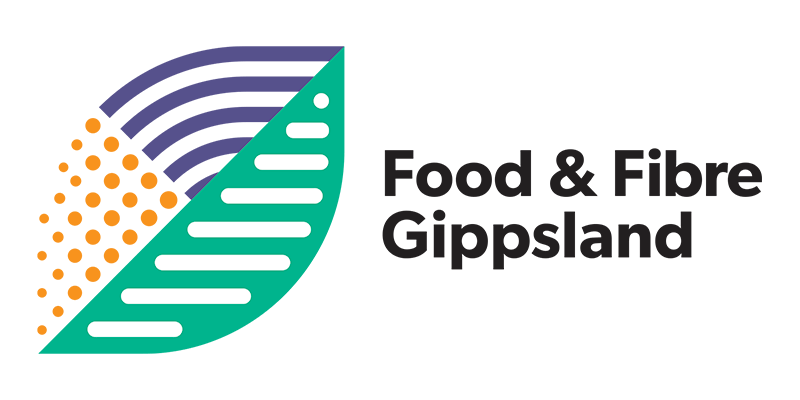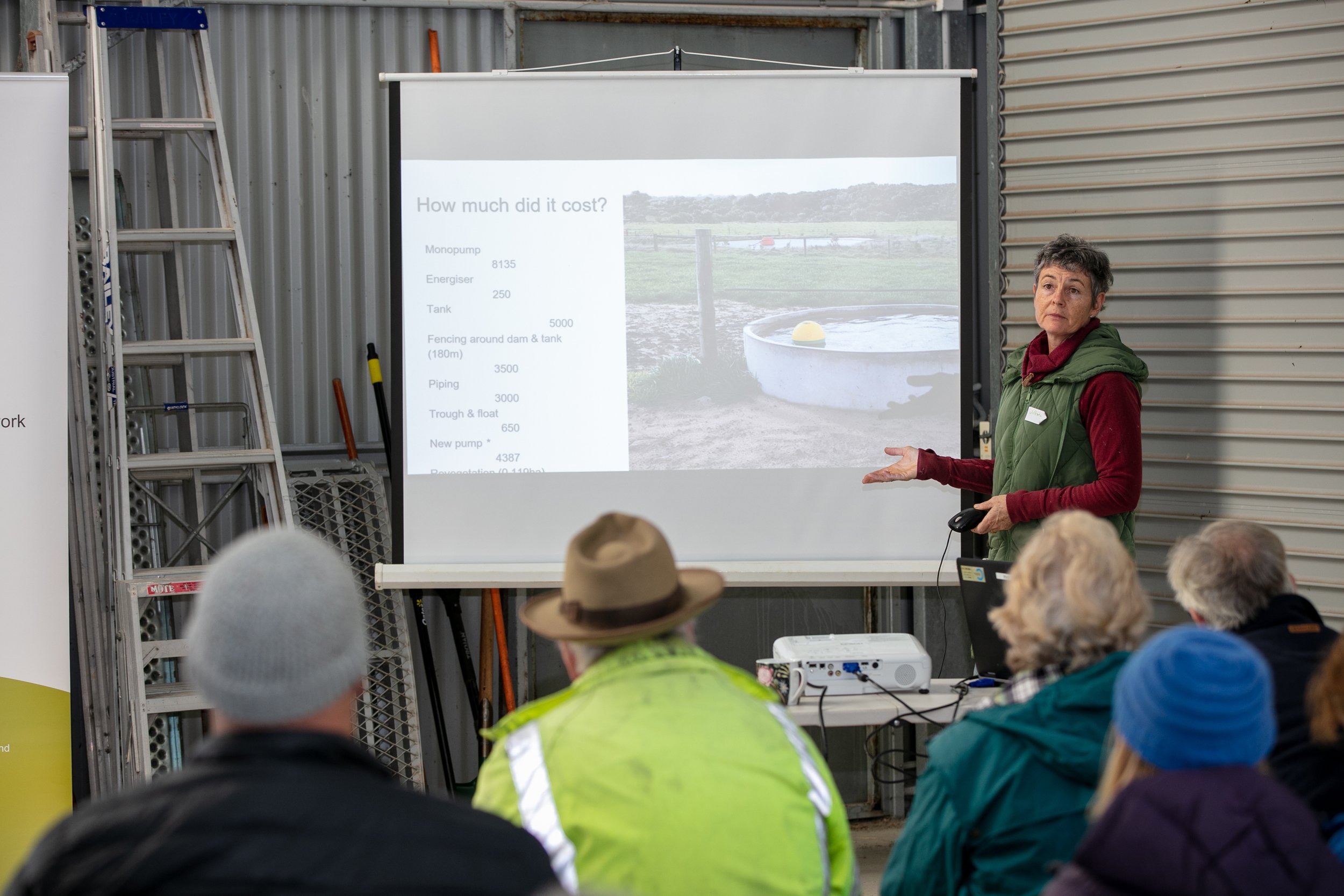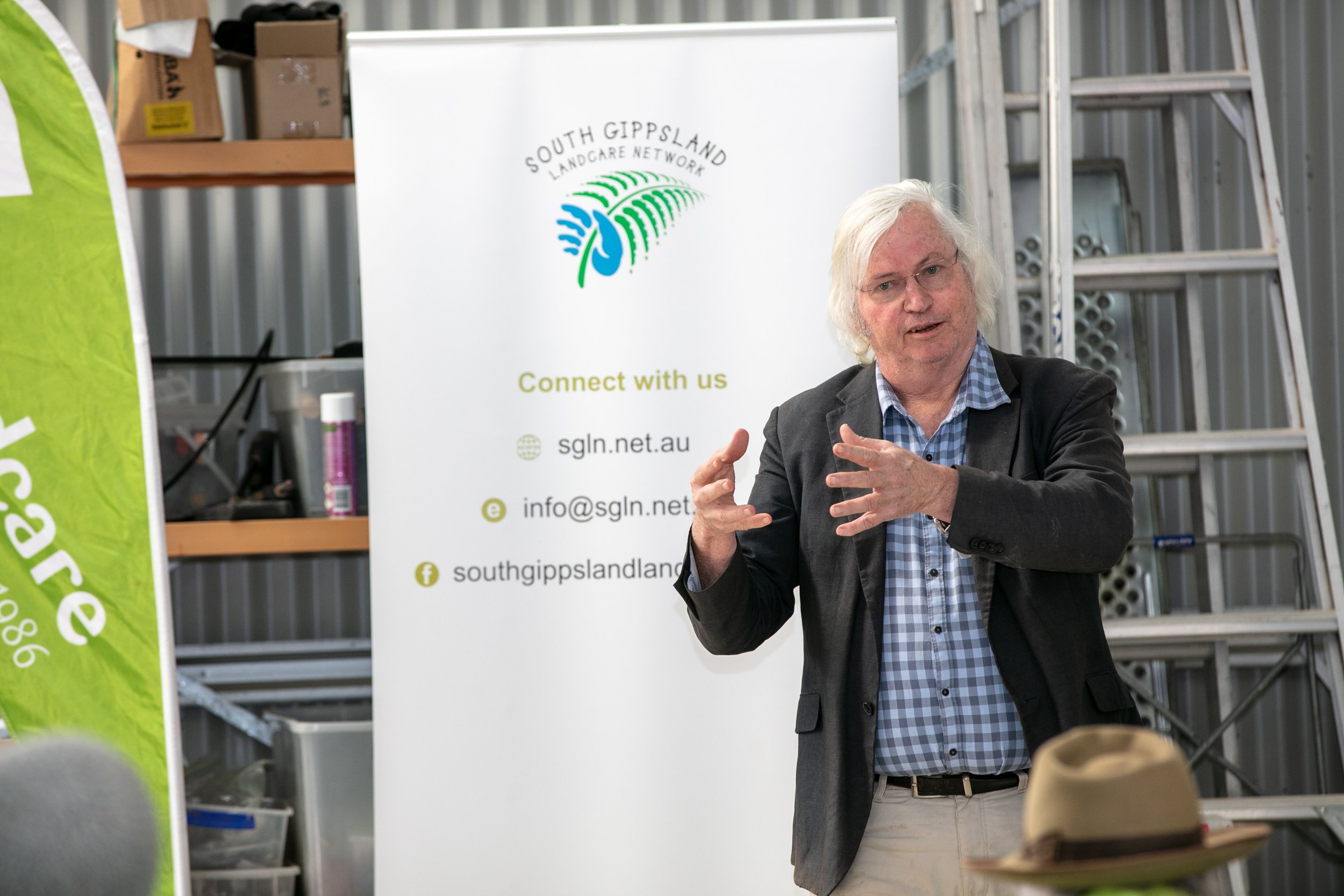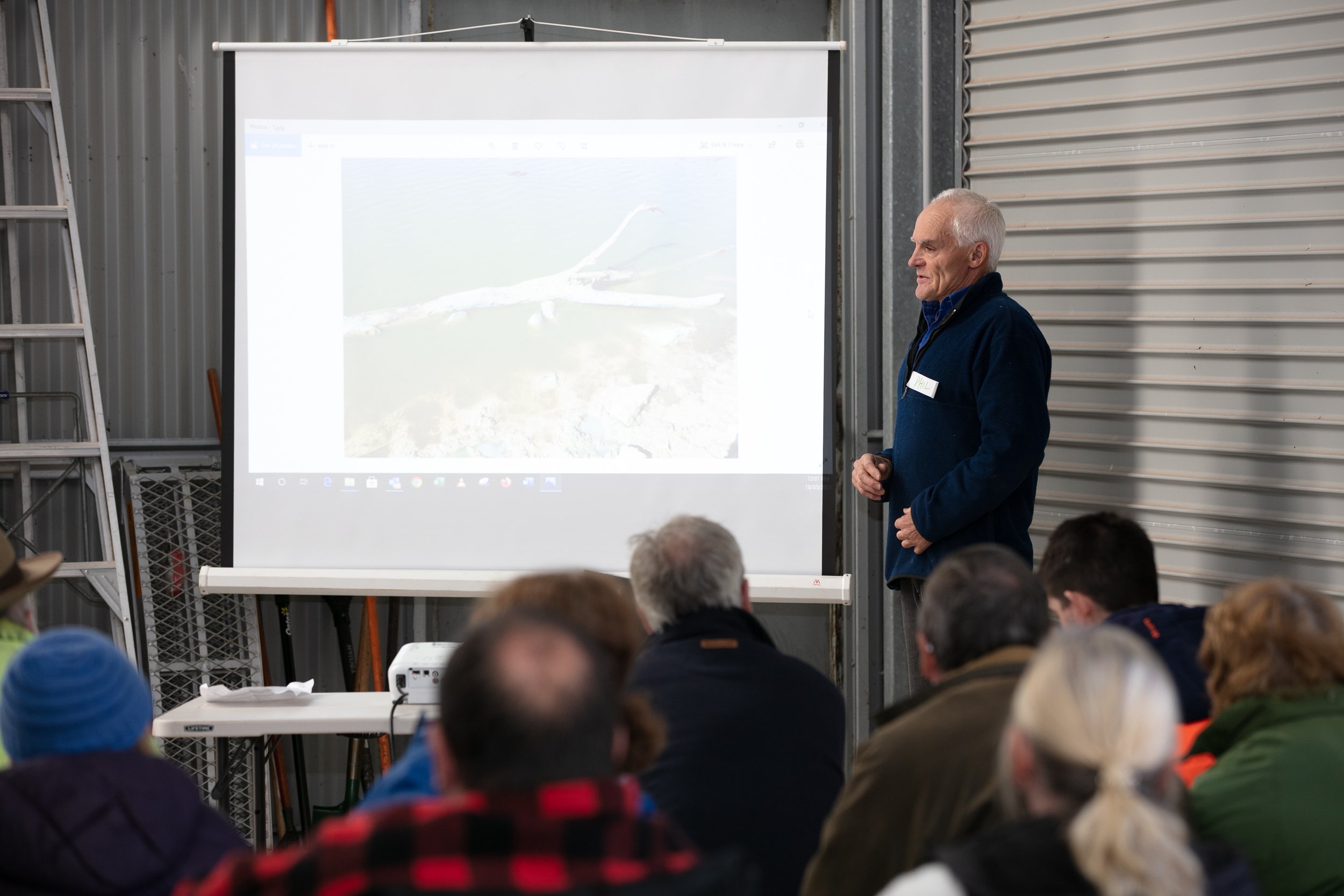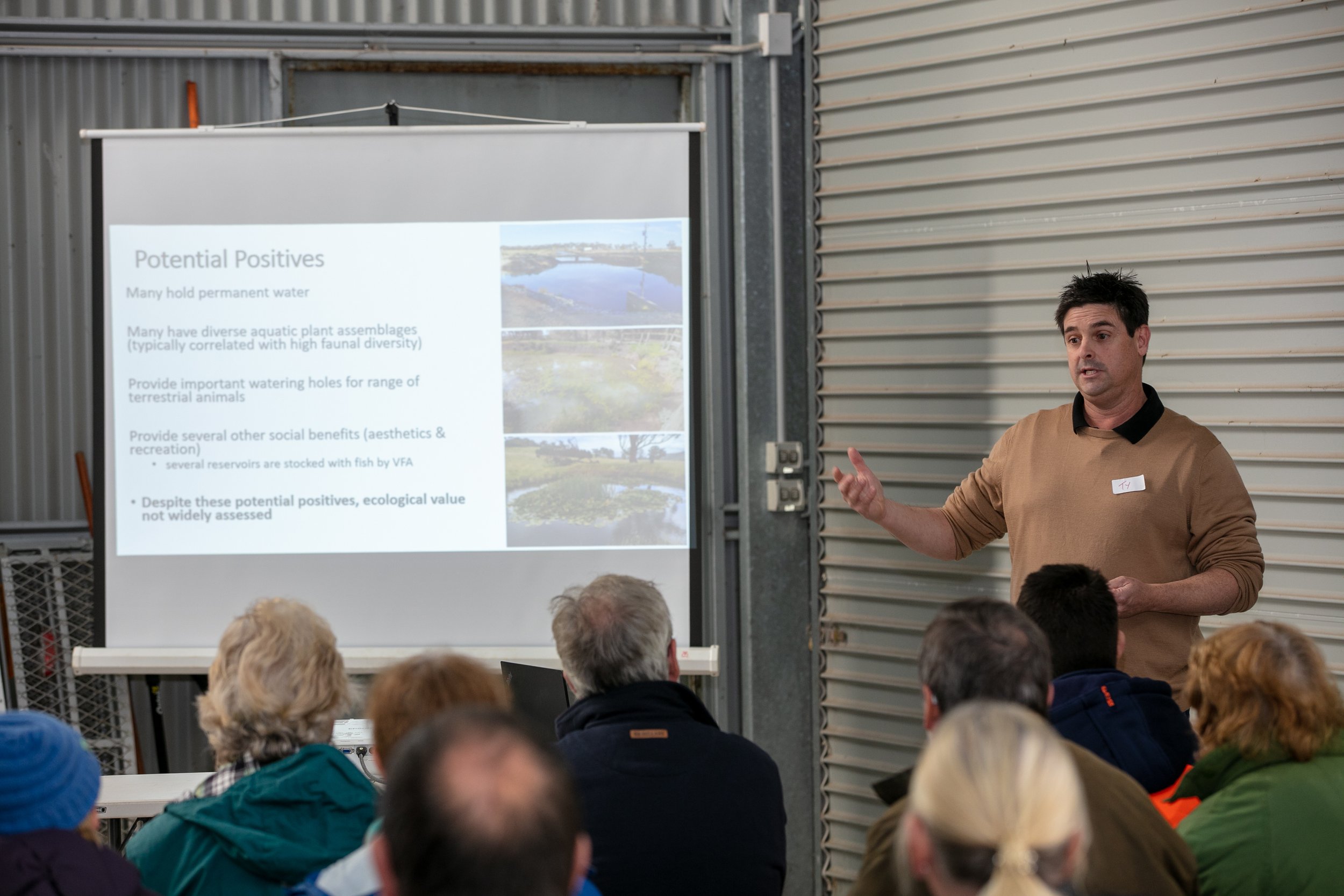Green Dams Project: Field day at Cape Liptrap
South Gippsland Landcare Network (SGLN) is leading a project which focuses on how management of vegetation in and around dams can be enhanced. The initiative seeks to address the gap in knowledge related to dam management in temperate environments.
Project participants Jillian Staton and Bruce Whittaker recently hosted a field day on their beef cattle property at Cape Liptrap. Three experts provided presentations before attendees looked at dams on the farm.
Jillian has shared a summary of the field day and what the experts had to say.
The huge turn-out at South Gippsland Landcare Network’s field day on 18 May revealed the high level of interest in the economic and environmental impacts of fencing-off farm dams.
Fifty people attended the event that was funded by the Victoria Drought Resilience Adoption and Innovation Hub and held on Jillian Staton and Bruce Whittaker’s beef farm at Cape Liptrap. Expert speakers included agricultural economist Professor Bill Malcolm, aquatic ecologist Dr Ty Matthews and large animal vet Dr Phil Poulton.
Jillian described how she and husband Bruce fenced-off a centrally located spring-fed dam six years ago to pipe water to troughs across their home farm. In her opinion, the investment (which included replacing a faulty pump) has already paid for itself by giving them flexibility and the ability to graze the entire property more effectively. The improvement in pasture quality was evident in both the before and after aerial photos, which were included in Jillian’s presentation, and observed while walking on the property after lunch.
Following presentations from experts in the morning, around 50 attendees embarked on a farm walk after lunch.
Professor Bill Malcolm urged participants to distinguish between economic and financial factors when making decisions as many outcomes cannot be ascribed a monetary value. Given the current lack of hard data proving a link between clean water and increased meat and milk production, he said that an economic decision to fence off a farm dam should be made in the context of the farm business as a whole. It should consider the dam as an asset with a finite life (he suggested 40 years for a new dam) and compare the likely returns if the money was invested elsewhere.
Dr Phil Poulton considered the economic impacts of fencing off farm dams from a risk management perspective. He said that providing stock with clean water from fenced-off dams virtually eliminates the risk of stock and production losses caused by diseases like Salmonella and Leptospirosis and toxic blue-green algae. It also prevents animals dying or getting injured from drowning or being stuck in mud. On the flip-side, he reminded participants of the need to monitor troughs regularly, especially in hot weather, as lack of drinking water can be catastrophic.
Dr Ty Matthews said that despite there being around 450,000 farm dams in Victoria, little research has been done into their ecological values. A recent project he has been involved in, however, indicates that fenced-off farm dams are providing refuge for aquatic fauna that are struggling to survive due to habitat loss caused by climate change and human activity. He believes that farm dams could play an important conservation role in the future, particularly in respect of threatened native frog and fish species.
Water samples from the revegetated dam show the presence of highly sensitive macro-invertebrates.
Later, on the farm walk, Ty took water samples from the fenced-off dam; a second dam, with a newly-constructed restricted access point; and a fully-open dam, which stock could access. The first sample demonstrated the high biodiversity benefits of excluding stock from dams. As well as being exceptionally clear, it contained highly sensitive macro-invertebrates (including mayflies) and a huge tadpole which was possibly a banjo frog. In contrast, the other samples had high turbidity and contained macro-invertebrates that have a high tolerance for poor water quality.
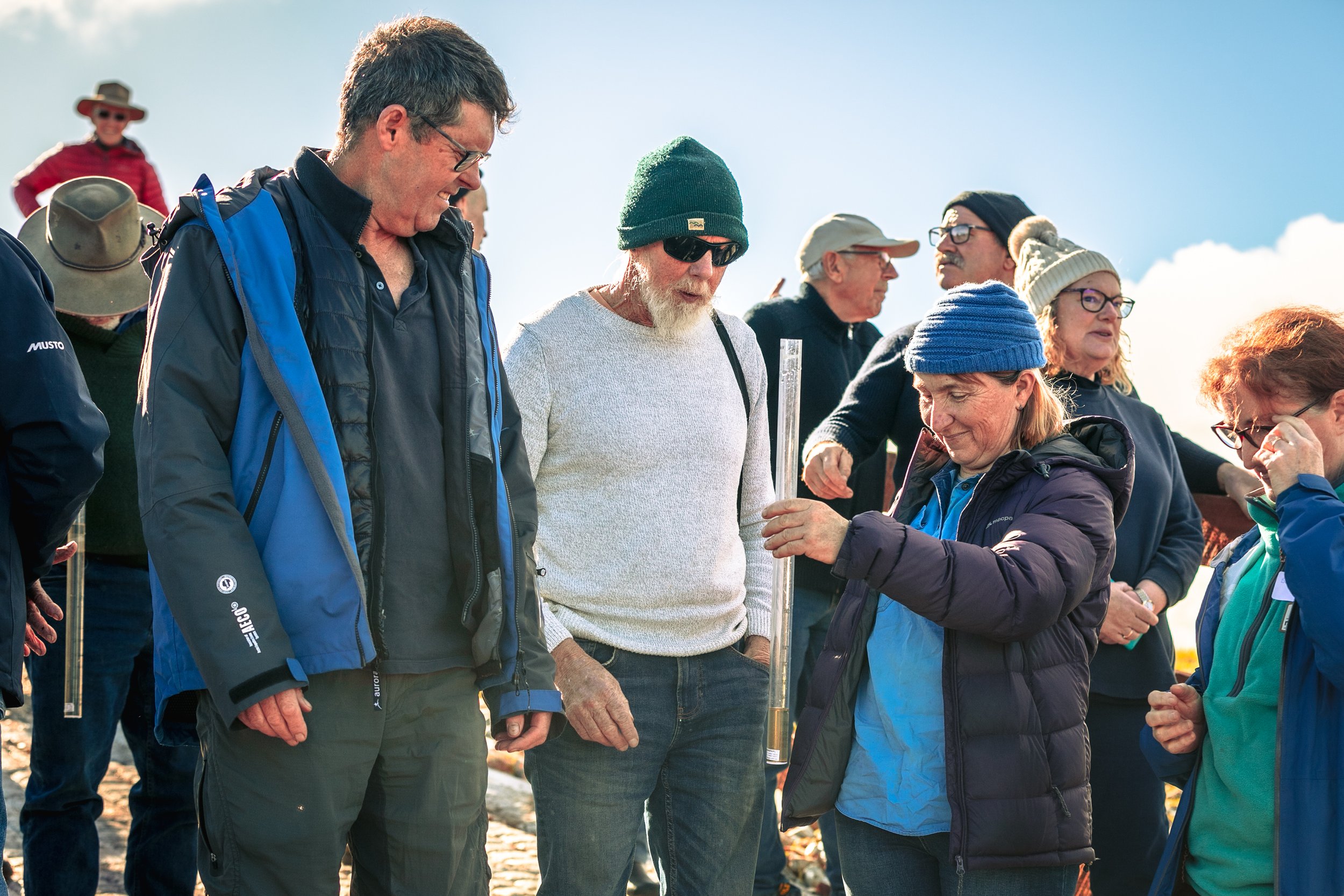
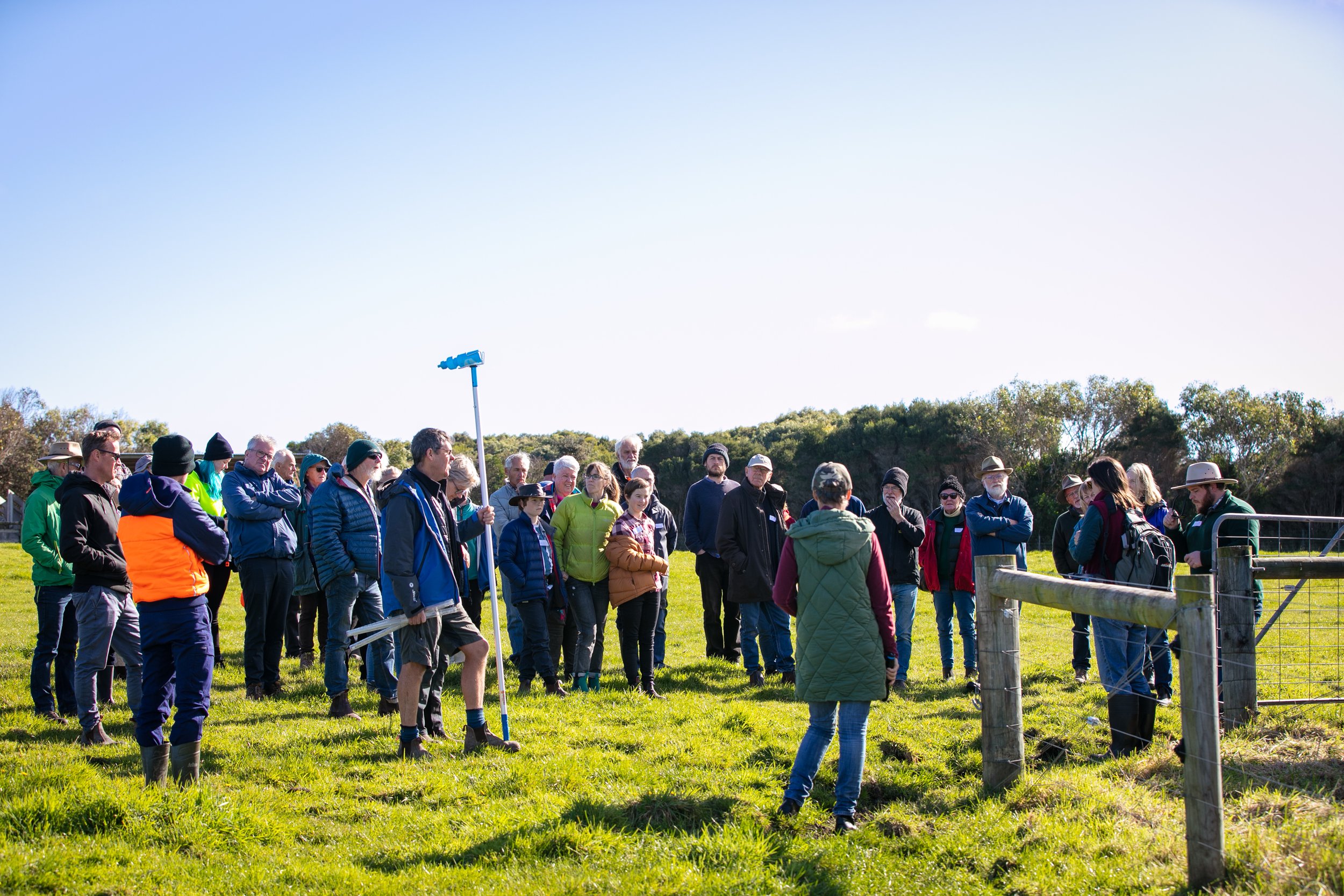
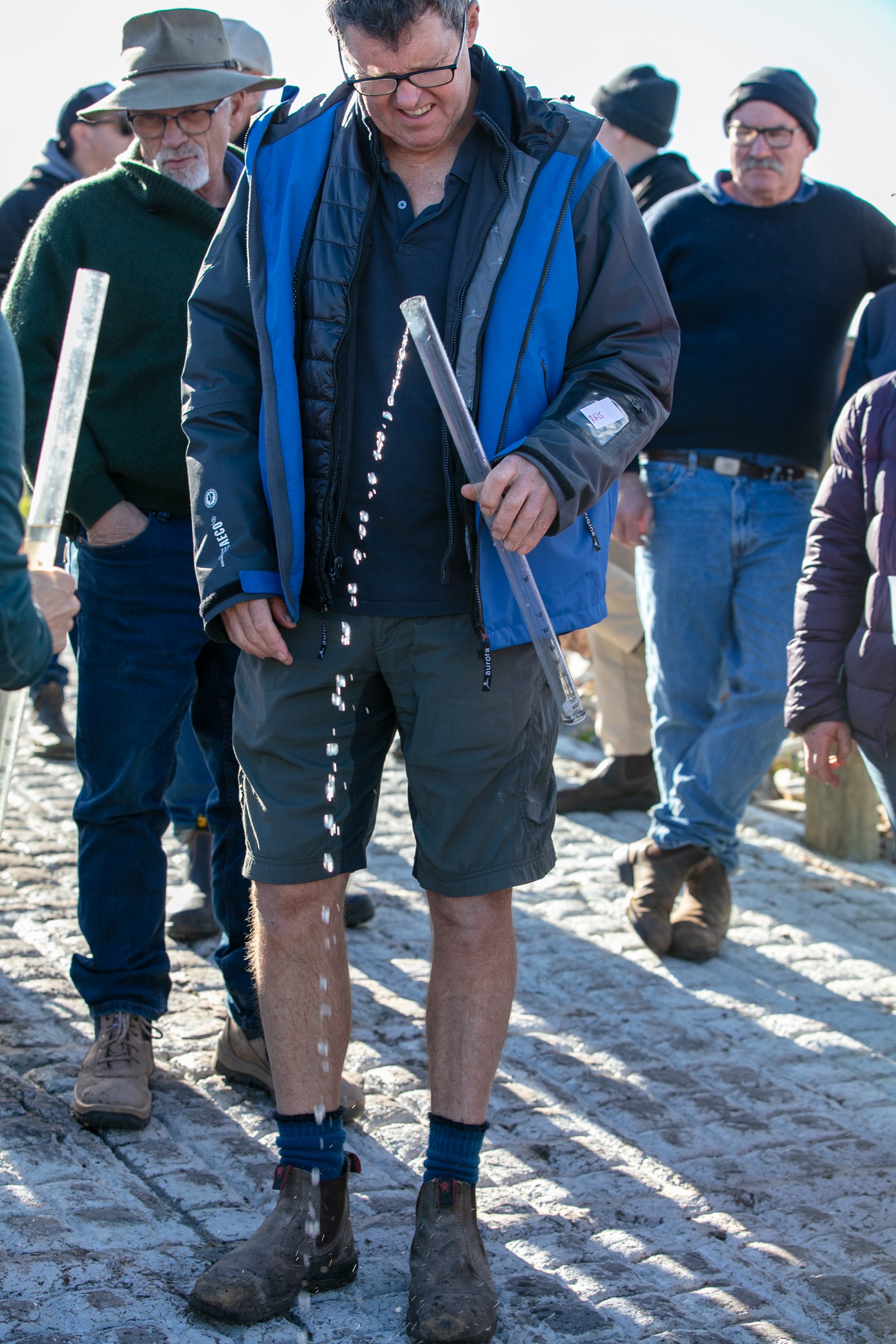
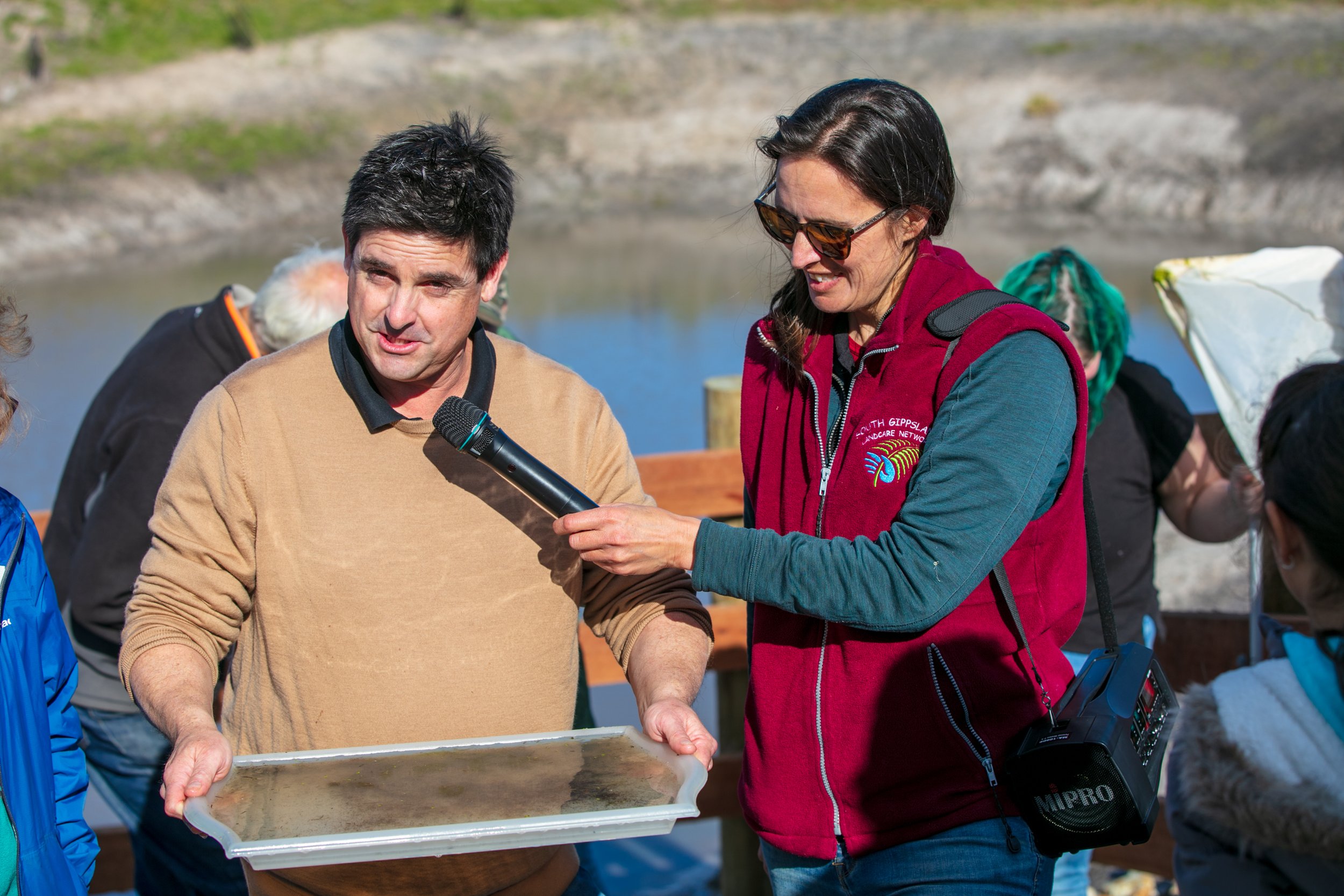
Another field day will be held around April 2024, by which stage the restricted access dam will have refilled and been in use for some time. Its value in preventing erosion and providing cleaner water for stock, along with habitat for wildlife, will be discussed in conjunction with any lessons learned from a farming perspective.
SGLN will be preparing resources on fencing-off farm dams, to be available on the network’s website (www.sgln.net.au). Contact cassie@sgln.net.au for more details.
The ‘Green Dams’ initiative is sponsored by Food & Fibre Gippsland through funding received by the Victoria Drought Resilience Adoption and Innovation Hub. The project is being delivered in partnership with Bass Coast LGA and Agriculture Victoria.
If you’d like more information, please contact us via info@foodandfibregippsland.com.au.
